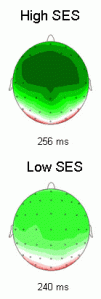 The Institute of Medicine is a government advisory group. This group studies a variety of medical and health issues. They have now issued a new report that urges the US government to screen soldiers who have had traumatic brain injury.
The Institute of Medicine is a government advisory group. This group studies a variety of medical and health issues. They have now issued a new report that urges the US government to screen soldiers who have had traumatic brain injury.
Traumatic brain injury has been a far too common occurrence in the Afghanistan and Iraq wars. Currently as of January and astounding 5,500 US military soldiers have suffered traumatic brain insults that are the result of improvised explosive devices.
The new study has indicated that those soldiers who experience these traumatic brain insults may be more likely to get some long term debilitating conditions. They are at increased risk for having Alzheimer’s dementia, major depression, memory loss and aggression.
The Institute of Medicine has currently recommended that the Department of Defense should devote more money and research to better protecting soldiers against this type of damage. The committee has also suggested that more studies should be performed on the long term side effects of the brain injuries.
The new report by the Institute of Medicine can be found here.
Under a Congressional mandate, the Institute of Medicine (IOM) has reviewed a wide array of biologic, chemical, and physical agents to determine if exposure to the agents might be responsible for the veterans’ long-term health problems. In this 2008 report, Gulf War and Health, Volume 7: Long-term Consequences of Traumatic Brain Injury, the IOM assesses the possible long-term health outcomes of traumatic brain injury (TBI).
The committee details numerous outcomes that might be associated with mild, moderate, and severe injuries. These include: neurologic, endocrine, psychologic outcomes, in addition to problems with social functioning.
In addition to the report’s findings, recommendations are provided for study of blast injuries and the report suggests methods of data-gathering for future research to improve our understanding of blast injuries which ultimately would improve veteran care. The report is part of the IOM’s Gulf War and Health series and was sponsored by the U.S. Department of Veterans Affairs.



